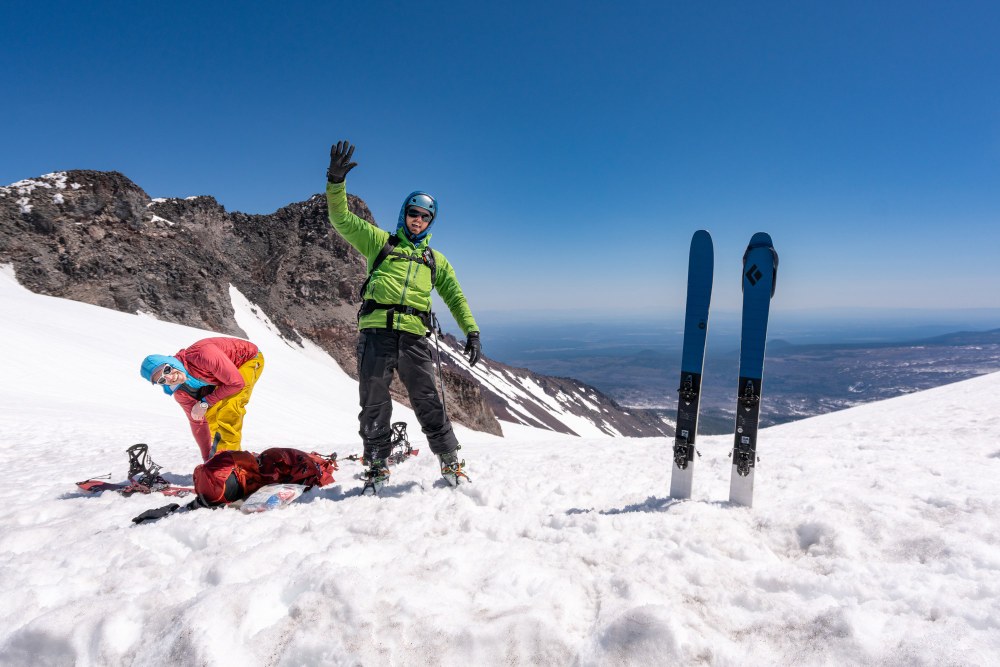
Remember how wonderful it felt to tumble or sled down a steep slope laughing so hard you fell off your saucer? As an adult, there is no better way to recapture those moments than by practicing rolling safely. Different than somersaults, shoulder rolls are the practice of going head-over-heels from shoulder to opposite hip, safely tucking the head. A wonderful way to improve your vestibular system – the sensory system in our bodies that gives us our balance and spatial awareness – they are fun as well as practical. This winter, you may find yourself spending some time in the snow on your belly, side, or back. Learn how to roll safely and have fun doing it.
Benefits of shoulder rolls
By practicing new skills in a safe and protected environment, like on a cushioned mat or rug, then progressing to realistic settings like soft snow, you can prepare your body for exercises that require balance and coordination. Start slowly; the first time I tried a few rolls, I discovered I felt a bit dizzy. But with a bit of practice, the body quickly adapts.
In addition to safer outdoor falls, practicing shoulder rolls can
better prepare your body for exercises that require balance and coordination (take note, climbers, scramblers, and slackliners!). Vestibular system rehab can also help improve motion sensitivity, vertigo, dizziness, and balance issues.
Proper execution
Practice rolling from right shoulder to left hip and left shoulder to right hip. It is quite likely you will find it more comfortable to roll to one side than to the other. Find the awkward side and plan to spend additional time rolling to that side.
To practice falling forward over your right shoulder, kneel on a
cushioned surface with your hands in front of you and aim one
shoulder forward to set your intention. If your right shoulder
is forward, you should end up on your left hip and vice versa.
Tuck your chin to help you stay in a tight ball as you push off
your toes to roll forward.
Start by completing several sets of 3-5 rolls in each direction
as part of your warm-up. You might roll on one shoulder across the mat, pause, then roll on the other shoulder on the way back.
Once you master the double kneeling roll, progress to one
knee, low crouch, half squat, and standing positions.
Tips for practicing safe shoulder rolls
Find a controlled environment. Start developing any new
skill in a safe environment. For rolls, that means practice
on a padded surface or soft snow. Mountaineers practice
glissading and self-arrests; hikers, skiers, and snowshoers
would benefit by practicing rolling. Start from a kneeling or
crouched position indoors on soft carpet or a mat, and work
up to standing. Eventually practice rolling in soft snow.
Tuck and twist. If you have any concerns about your neck and lower back, remember that these are not somersaults. Done properly, you should roll smoothly across your back from one shoulder toward the opposite hip. Tuck your chin and use your abdominal muscles to remain in a tight ball, twisting so that you land on your shoulder blade.
Stay relaxed. If you fall backwards or sideways, keep your
joints soft and stay loose and protect your head and neck.
Locking out your joints may result in an injury.
Soft landings. Try to land on larger, meatier parts of your
body (avoiding your wrists, ankles, or elbows) and keep your
momentum going. Tuck into a roll rather than impacting your
body at one small point. Be safe, have fun, and roll on!
Courtenay Schurman is an NSCA-CSCS certified personal
trainer, Precision Nutrition Level 2 Certified Nutrition
Supercoach, and co-owner of Body Results. She specializes in
training outdoor athletes. For more how-to exercises or health
and wellness tips, visit her website at www.bodyresults.com or
send a question to court@bodyresults.com.
This article originally appeared in our winter 2023 issue of Mountaineer magazine. To view the original article in magazine form and read more stories from our publication, visit our magazine archive.
 Courtenay Schurman
Courtenay Schurman